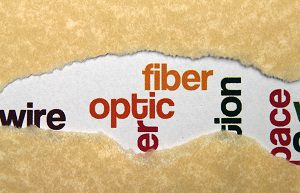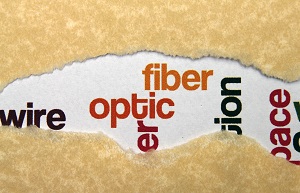by Des Nnochiri
 A quick way of guessing which generation a person belongs to is to mention the words “dial-up internet” and gauge their reaction. If the response is an elevated quizzical eyebrow, then they are probably at the younger end of Gen Y (millennials) or a Gen Z child. If, however, the term elicits a pained look upon the face of the person, then you can happily place them at older than that.
A quick way of guessing which generation a person belongs to is to mention the words “dial-up internet” and gauge their reaction. If the response is an elevated quizzical eyebrow, then they are probably at the younger end of Gen Y (millennials) or a Gen Z child. If, however, the term elicits a pained look upon the face of the person, then you can happily place them at older than that.
Thankfully, the days of dial-up internet are pretty much behind us now in the Western world. Gone are the ear-shattering connection tones and the painfully slow rate at which websites loaded their content. Also, a rapidly fading memory is the need to have the phone line free to use the internet, although, somewhat ironically, hardly anyone uses their landline these days anyway.
With that brief eulogy for dial-up internet out of the way, let’s move on to the more modern technology which replaced it, and the even newer tech which threatens to do the same again.
ADSL
Asymmetric Digital Subscriber Line (ADSL) is what most people know these days as standard broadband. The technology was developed to allow for greater connection speeds to be transmitted over a copper phone line than is possible with a conventional voice band modem. The “asymmetric” part of the name comes from the fact that the technology has a disparity between the downstream and the upstream rates.
While Symmetric Digital Subscriber Line (SDSL) technology does exist, it is rare, and prioritizing the rate at which information is received by the end user, rather than sent from them, makes for a more efficient service. ADSL is, therefore, mainly used as a consumer product, used to access the internet and download content, rather than serving content which would be accessed by other users.
ADSL technology’s ability to use existing copper telephone lines makes it the most widely available choice for broadband internet provision.
Fiber Optic
Fiber optic broadband uses a different kind of cable entirely. Instead of copper phone lines, fiber optic uses thin cables made from a type of transparent silica or plastic. As the name suggests, the cables can transmit information through light signals rather than vibrations.
With information literally traveling at the speed of light, fiber optic broadband allows for much higher downstream and upstream rates than its ADSL counterpart. On top of increased speeds, fiber optic cables are immune to electromagnetic interference, have a lower attenuation loss over long distances, do not conduct electricity, and are difficult to tap without detection, unlike copper wires. This means that, not only is a fiber optic broadband faster than ADSL, but also more reliable, less prone to interference, and able to transmit information more securely.
Fiber optic broadband generally comes in two flavors – Fiber to the Cabinet (FTTC) and Fiber to the Premises (FTTP). With FTTC, the cable which runs from the exchange to the cabinet (that junction box at the end of your road – If you’re in the UK![]() it’ll likely be green and have “BT” written on it) will be made from fiber optic material. From there, conventional copper phone lines take the signal the rest of the way to the modem. While this does result in a speed bottleneck as the signal changes from fiber optic to copper cables, it is still capable of significantly higher speeds than traditional ADSL alone.
it’ll likely be green and have “BT” written on it) will be made from fiber optic material. From there, conventional copper phone lines take the signal the rest of the way to the modem. While this does result in a speed bottleneck as the signal changes from fiber optic to copper cables, it is still capable of significantly higher speeds than traditional ADSL alone.
As the name suggests, FTTP has fiber optic cables to the cabinet, and then another from the cabinet to the property. The length of fiber optic cable between the cabinet and the premises will normally have to be installed especially for the service and there are presently a limited number of companies offering the service. FTTP removes the bottleneck that FTTC suffers from and has the potential to reach significantly higher speeds. For comparison’s sake, FTTC usually averages between 30-40 mbps, while FTTP can achieve upwards of 100 mbps.
So Which is Better?
Clearly, fiber optic broadband offers the faster and more reliable service, but customers will normally pay a premium for it.
Rather than simply a case of deducing which one is better, it’s far more useful to think carefully about what you use your internet for. If, for example, you are a couple living alone, with no children, and you just want to be able to browse the internet, send emails, and curl up with the occasional movie on Netflix or a similar service, then it’s likely ADSL will more than serve your needs.
However, if you are a large family, where many people are likely to be using the internet at the same time and using it for functions which demand high bandwidth availability, such as online gaming, HD streaming on multiple devices, and downloading content, then you may find that ADSL will start to creak under the strain. It is in these circumstances that fiber optic will almost certainly be beneficial.
Final Thoughts
Hopefully our guide has given you a bit more of an idea on the difference between fiber optic and ADSL/standard broadband. Mobile broadband is also rapidly becoming a serious contender in this field, so look out for a future article where we may add that technology to our line-up.
